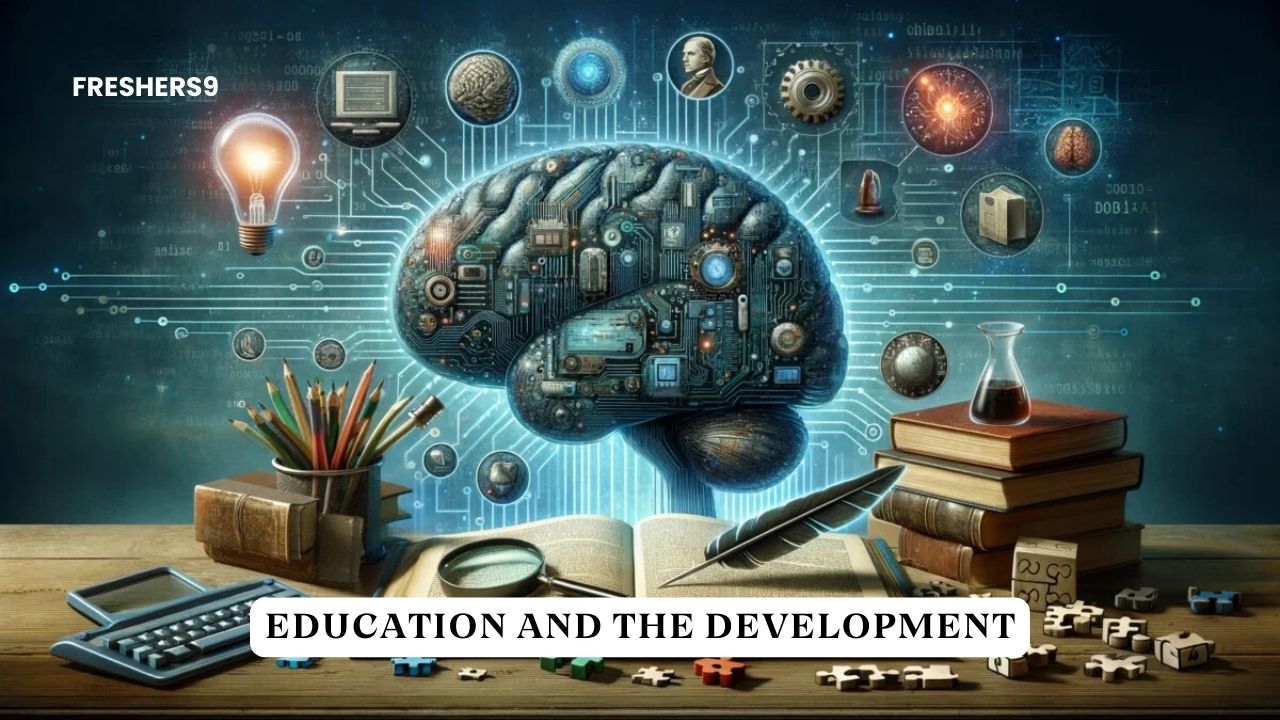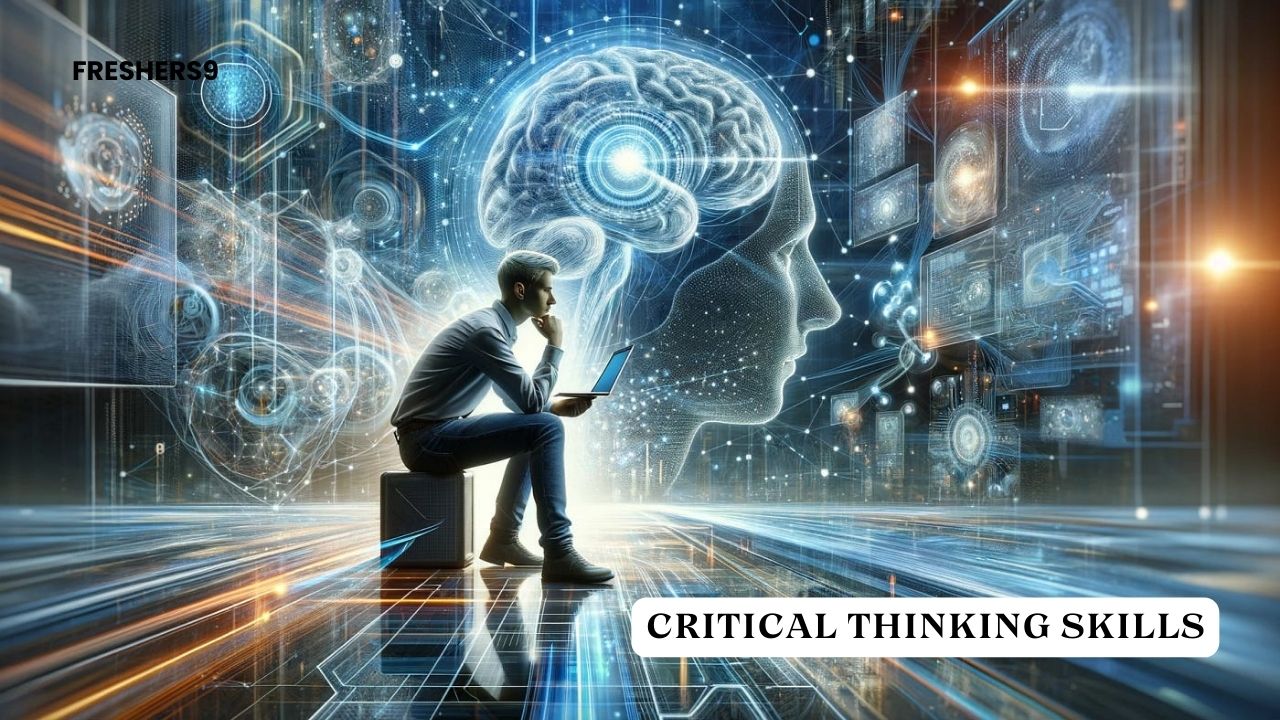Education and the Development of Critical Thinking Skills
Critical thinking is an essential skill that enables individuals to analyze information, make informed decisions, and solve complex problems. In a rapidly changing world, the ability to think critically has become increasingly important. Education plays a pivotal role in nurturing critical thinking, providing students with the tools and opportunities to develop this crucial skill. This article explores the significance of critical thinking, the ways education fosters its development, and the methods educators can use to enhance critical thinking skills in their students.
Understanding Critical Thinking
Defining Critical Thinking
Critical thinking involves the objective analysis and evaluation of information to form a judgment. It is a disciplined process that includes the ability to reason logically, question assumptions, identify biases, and consider alternative perspectives. Critical thinking requires a combination of cognitive skills, such as analysis, interpretation, inference, and evaluation, as well as dispositions like open-mindedness, curiosity, and scepticism.

Importance of Critical Thinking
The importance of critical thinking cannot be overstated. It enables individuals to navigate complex and ambiguous situations, make sound decisions, and solve problems effectively. In an era characterized by information overload and rapid technological advancements, critical thinking helps individuals discern credible information from misinformation and develop well-reasoned opinions. It also fosters creativity, innovation, and lifelong learning, empowering individuals to adapt to changing circumstances and contribute meaningfully to society.
The Role of Education in Developing Critical Thinking
Creating a Supportive Learning Environment
A supportive learning environment is fundamental to developing critical thinking skills. Educators must create a classroom culture that encourages questioning, exploration, and open dialogue. This involves promoting a safe and inclusive space where students feel comfortable expressing their thoughts and opinions without fear of judgment. By fostering a culture of respect and curiosity, educators can inspire students to engage deeply with the material and think critically about the issues at hand.
Encouraging Inquiry-Based Learning
Inquiry-based learning is a powerful approach to nurturing critical thinking. This method emphasizes student-led exploration and investigation, encouraging learners to ask questions, conduct research, and draw conclusions based on evidence. Inquiry-based learning can be implemented through project-based activities, problem-solving tasks, and real-world scenarios that require students to apply their knowledge and skills. By actively engaging in the learning process, students develop critical thinking abilities and a deeper understanding of the subject matter.
Integrating Critical Thinking into the Curriculum
Integrating critical thinking into the curriculum is essential for its development. This involves designing lessons and activities that require students to analyze information, evaluate evidence, and construct arguments. Educators can incorporate critical thinking skills into various subjects by using case studies, debates, simulations, and reflective writing assignments. By embedding critical thinking into the curriculum, educators can ensure that students practice these skills regularly and understand their relevance across different disciplines.
Teaching Metacognitive Strategies
Metacognition, or thinking about thinking, is a crucial component of critical thinking. Teaching students metacognitive strategies involves helping them become aware of their thought processes, monitor their understanding, and regulate their learning. Educators can encourage metacognitive practices by prompting students to reflect on their reasoning, ask themselves questions, and evaluate their progress. By developing metacognitive awareness, students can become more self-directed learners and enhance their critical thinking abilities.
Strategies for Enhancing Critical Thinking Skills
Socratic Method
The Socratic Method is a timeless strategy for fostering critical thinking. Named after the ancient Greek philosopher Socrates, this method involves asking a series of probing questions to stimulate deeper thinking and illuminate underlying assumptions. Educators can use the Socratic Method by posing open-ended questions, encouraging students to defend their viewpoints, and facilitating discussions that explore different perspectives. This approach helps students develop analytical skills, recognize the complexity of issues, and appreciate the value of dialogue in the pursuit of knowledge.
Problem-Based Learning
Problem-based learning (PBL) is an instructional approach that presents students with real-world problems to solve. PBL encourages active learning, critical thinking, and collaboration as students work in teams to identify issues, gather information, and propose solutions. This method promotes the application of knowledge in authentic contexts, helping students develop problem-solving skills and the ability to think critically under pressure. By engaging in PBL, students learn to approach problems systematically and consider multiple factors in their decision-making processes.
Case Studies and Simulations
Case studies and simulations are effective tools for developing critical thinking skills. These methods present students with complex scenarios that require analysis, decision-making, and reflection. Case studies often involve real-life situations, allowing students to apply theoretical knowledge to practical problems. Simulations, on the other hand, create immersive experiences where students can experiment with different strategies and observe the outcomes. Both approaches encourage critical thinking by challenging students to evaluate evidence, consider consequences, and make informed choices.
Collaborative Learning
Collaborative learning is a powerful strategy for enhancing critical thinking skills. Working in groups allows students to share ideas, challenge each other's thinking, and build on diverse perspectives. Collaborative activities, such as group projects, peer reviews, and discussion forums, promote active engagement and critical dialogue. Educators can facilitate collaborative learning by creating structured opportunities for teamwork, setting clear goals, and providing guidance on effective communication and conflict resolution. Through collaboration, students develop critical thinking skills and learn the value of collective intelligence.
Reflective Writing
Reflective writing is an effective method for promoting critical thinking. This practice involves asking students to reflect on their learning experiences, analyze their thought processes, and articulate their insights. Reflective writing assignments, such as journals, essays, and self-assessments, encourage students to examine their assumptions, evaluate their reasoning, and consider alternative viewpoints. By engaging in reflective writing, students develop metacognitive awareness and a deeper understanding of their cognitive processes, enhancing their critical thinking abilities.
The Role of Technology in Developing Critical Thinking
Digital Tools and Resources
Technology offers numerous tools and resources for developing critical thinking skills. Digital platforms, such as educational software, online courses, and interactive simulations, provide students with engaging and dynamic learning experiences. These tools often include features like instant feedback, adaptive learning, and data analytics, which can help students track their progress and identify areas for improvement. By leveraging technology, educators can create interactive and personalized learning environments that foster critical thinking.
Information Literacy
In the digital age, information literacy is a critical component of critical thinking. Information literacy involves the ability to locate, evaluate, and use information effectively. Educators can promote information literacy by teaching students how to assess the credibility of sources, recognize bias, and synthesize information from multiple perspectives. Digital tools, such as search engines, databases, and citation management software, can support these skills by providing access to diverse information and facilitating efficient research practices. By developing information literacy, students become more discerning consumers of information and enhance their critical thinking capabilities.
Online Collaboration
Online collaboration tools, such as discussion boards, video conferencing, and collaborative documents, enable students to engage in critical thinking activities beyond the classroom. These tools facilitate communication, teamwork, and knowledge sharing, allowing students to collaborate on projects, debate ideas, and provide peer feedback. Online collaboration can broaden students' perspectives by connecting them with diverse viewpoints and fostering a global learning community. By incorporating online collaboration into their teaching strategies, educators can create rich and interactive learning experiences that promote critical thinking.
Challenges and Solutions in Developing Critical Thinking
Overcoming Resistance to Critical Thinking
Developing critical thinking skills can be challenging due to resistance from both students and educators. Students may be accustomed to passive learning and reluctant to engage in active questioning and analysis. Educators may face institutional constraints, such as standardized testing and rigid curricula, that limit opportunities for critical thinking. To overcome these challenges, educators can gradually introduce critical thinking activities, provide clear expectations and support, and advocate for a more flexible and student-centred approach to education. Building a culture of critical thinking requires persistence, collaboration, and a commitment to fostering intellectual curiosity.
Addressing Diverse Learning Needs
Students have diverse learning needs and may require different approaches to develop critical thinking skills. Some students may benefit from visual aids, hands-on activities, or scaffolded instruction, while others may prefer independent research or discussion-based learning. Educators can address diverse learning needs by using differentiated instruction, offering multiple pathways to learning, and providing individualized feedback and support. By recognizing and accommodating diverse learning styles, educators can create inclusive learning environments that promote critical thinking for all students.
Balancing Content Knowledge and Critical Thinking
Balancing the acquisition of content knowledge with the development of critical thinking skills is a common challenge in education. While content knowledge is essential, it is equally important for students to learn how to think critically about the information they encounter. Educators can strike this balance by integrating critical thinking activities into content-based lessons, using formative assessments to gauge students' understanding, and emphasizing the process of learning over the memorization of facts. By prioritizing both content knowledge and critical thinking, educators can prepare students to navigate complex issues and solve real-world problems.
The Impact of Critical Thinking on Personal and Professional Success
Personal Growth and Lifelong Learning
Critical thinking is a cornerstone of personal growth and lifelong learning. It empowers individuals to reflect on their experiences, question their assumptions, and seek continuous improvement. Critical thinkers are more likely to engage in self-directed learning, pursue diverse interests, and adapt to changing circumstances. By fostering critical thinking skills, education equips individuals with the mindset and tools to navigate life's challenges, achieve personal fulfilment, and contribute meaningfully to society.
Professional Competence and Innovation
In the professional realm, critical thinking is a valuable asset that enhances competence and innovation. Employers across industries seek individuals who can analyze information, solve problems, and make informed decisions. Critical thinkers are better equipped to handle complex tasks, work collaboratively, and lead with confidence. Moreover, critical thinking fosters creativity and innovation, enabling individuals to generate new ideas, challenge the status quo, and drive progress. By developing critical thinking skills, education prepares students for successful and fulfilling careers.
Civic Engagement and Social Responsibility
Critical thinking is essential for civic engagement and social responsibility. It enables individuals to critically evaluate societal issues, participate in informed discourse, and advocate for positive change. Critical thinkers are more likely to be active citizens who contribute to their communities, challenge injustices, and promote democratic values. By nurturing critical thinking, education cultivates informed and responsible citizens who can address global challenges and work towards a more just and equitable world.

Critical thinking is a vital skill that underpins personal, professional, and civic success. Education plays a crucial role in nurturing critical thinking by creating supportive learning environments, encouraging inquiry-based learning, integrating critical thinking into the curriculum, and teaching metacognitive strategies. Educators can enhance critical thinking skills through methods such as the Socratic Method, problem-based learning, case studies, collaborative learning, and reflective writing. Technology also offers valuable tools and resources for developing critical thinking, including digital platforms, information literacy, and online collaboration.
Despite the challenges of developing critical thinking, such as resistance and diverse learning needs, educators can overcome these obstacles by fostering a culture of curiosity, providing differentiated instruction, and balancing content knowledge with critical thinking activities. The impact of critical thinking extends beyond the classroom, contributing to personal growth, professional competence, and civic engagement. By nurturing critical thinking skills, education empowers individuals to navigate complexity, make informed decisions, and contribute meaningfully to society. In a world characterized by rapid change and uncertainty, critical thinking remains an essential skill for thriving in the 21st century.